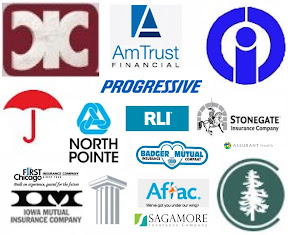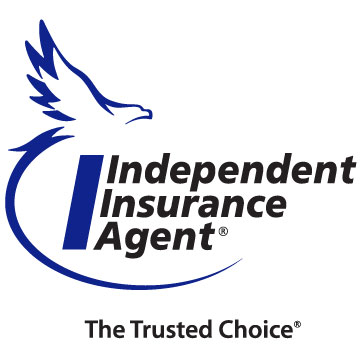Bret Dixon Insurance News
Our newsletters are intended to keep you up to date on
pertinent industry news and offer more in-depth insight into various
types of coverage and endorsements. We publish our newsletters
at least once each quarter. We hope you enjoy it.
Thank you for your patronage!
|
|
|
Recommendations Getting Closer
Scrutiny
We've talked
about rising rates in this space before, as companies look to balance
out after tremendous storm damage losses across the nation the last
few years. Another side affect of periods of large claim
activity is closer attention being paid to inspections and the
subsequent recommendations generated by those inspections.
For commercial
businesses, annual inspections are pretty much the norm. But
with personal lines - homes, condos, rental property,
etc...inspections vary. Some insurers never inspect, some of
them inspect a handful of policies as a sample, and others
may only inspect based on certain criteria such as the age of the
structure or past claims activity at the address.
Personal property inspections are almost universally exterior
only, but inspections on commercial property usually
include inspecting the interior as well.
Typically, a
company will inspect a commercial risk shortly after writing the
policy (30-90 days). If you have your lines of business split
amongst insurers, each insurer may want their own inspection.
So if your property coverage is with Company A, your general
liability is with Company B and your liquor liability is with Company
C, it's quite possible you could have three different inspectors
wanting to schedule a time to meet with you at your property.
These
inspections are to evaluate the risk exposures at your property,
estimate a replacement cost, and verify that your property and
operations are as presented to them on the application by your
agent. If they are inspecting after you have renewed your
policy, they're checking to see if those things have
changed from a prior inspection.
The inspector
will observe the condition of your building and any risks on the
property or in the neighborhood. They may also measure the
building, sketch a diagram, collect other physical data and snap some
pictures.
Within a week
or two of the inspection, you may receive a letter outlining certain
conditions at the property which need rectified. Some of these may be
advisory (just letting you know about a situation) or
mandatory. As you can probably surmise, mandatory
recommendations mean they want some type of corrective action.
They'll typically give you 30-60 days to correct any issues.
Proof of these repairs may be in several forms. Some companies
will accept your signature on a recommendations list, attesting that
you've fixed any situations listed. Others may require a receipt
or work order from a contractor or even pictures showing the repairs.
A
comprehensive list of what is looked for is too big for this column,
and, based on varying state laws and ordinance and code variance from
municipality to municipality, impractical. But some of the more
common recommendations issued are listed below.
- debris around the building
- leaking pipes
- roof damage
- loose wiring or uncovered electrical
outlets or panels
- overloaded electrical outlets
- emergency lighting not up to code
- steps or porches without proper handrails
- uneven surfaces marked with reflective
tape/strips
- doors swing outward, with direction of
egress
- Parking blocks around buildings &
potholes in parking lots
- Protective safeguards in compliance and
working order. These include hoods & ducts, fire
extinguishers, fire suppression system and sometimes sprinkler
systems and premises alarms, if present. See service requirements here.
- age and condition of major building
systems - roof, electrical, plumbing and heating
- deteriorating side, soffit, and
door/window seals - anything that could prevent moisture from
getting inside the structure and causing further damage
No
Need to Panic
Companies
understand that the recommendations they issue can take some time to
be addressed. There are things that you can take care of and there
are some things that may require a 3rd party vendor or contractor to
fix, which can complicate the speediness of repairs.
If proof of
compliance with mandatory recommendations still isn't received at the
end of the initial period the company gave you to make
repairs, insurers will go one of two routes. First off, is
to let the matter go and non-renew you at the end of the policy
term. Few companies still do this. If they've already
identified hazardous situations that may elevate their exposure for a
loss, they're not likely to give it more time for a potential loss to
occur.
The more
common approach is to issue cancellation for "non-compliance
with mandatory safety recommendations." All is not lost
when the cancellation is issued. Cancellation can only be
issued for another 30-60 days out (depending on your state), and most
companies will accept proof of compliance with recommendations and
withdraw the cancellation provided it's received before the date of
cancellation.
What
Does It Matter?
Basically, it
comes down to that old adage, "an ounce of prevention is worth a
pound of cure." If a $40 handrail on a set of steps could
prevent one person from falling, thus saving hundreds, thousands,
perhaps even tens-of-thousands of dollars in medical bills, the
insurer is going to push for it. If mandating that the use of
extension cords be curtailed by installing an additional outlet for a
few hundred dollars, and it prevents one large fire, the
insurer will push for it. Some companies are more diligent than
others at enforcing certain things, but they all do it.
Many people
think of recommendations as nit-picking on the part of their insurer,
but in general, the company is really just looking out for both
of you. They want a risk that's less likely to suffer a loss, making
them more profitable. You get a business less likely to be
interrupted by a loss, allowing you to focus on day-to-day operations
and turning a profit.
|
|
Can Online Reviews Make or Break You?
In mid-to-late
May, it was the customer service disaster heard around the Internet.
An Arizona restaurateur, fed up after years of negative online
reviews and an embarrassing appearance on a reality television show,
allegedly posted a social media rant laced with salty language and
angry, uppercase letters that quickly went viral, much to the delight
of those who love a good Internet meltdown.
"I AM
NOT STUPID ALL OF YOU ARE," read the posting on the Facebook
wall of Amy's Baking Company in Scottsdale, Arizona. "YOU
JUST DO NOT KNOW GOOD FOOD."
It was, to put
it kindly, not a best business practice. Add to that an appearance
earlier this spring on the Fox reality TV show "Kitchen
Nightmares" - where celebrity chef Gordon Ramsay gave up on
trying to reform the restaurant after the owners refused to listen to
his advice - and you have a recipe for disaster.
In the
evolving world of online marketing, where the power of word of mouth
has been wildly amplified by the whims and first impressions of
anonymous reviewers posting on dozens of social media websites,
online comments, both good and bad, and the reactions they trigger
from managers, can make all the difference between higher
revenues and empty storefronts.
Businesses
that depend on good customer service reviews have all grappled in
recent years with how to respond to online feedback on sites such as
Twitter, Foursquare, Yelp, Facebook and Instagram, where comments can
often be more vitriol than in-person reviews because of the anonymous
shield many social media websites provide.
The general
consensus of digital marketing experts is that no matter how ugly the
reviews get, businesses need to be willing to acknowledge mistakes,
apologize, and offer discounts to lure unhappy customers back.
In the past,
customers sent back bad food, they gritted their teeth over service
delays, and fumed at home over perceived overcharging. Maybe
they were still steamed about it the next time they saw friends and
family and maybe they still cared enough to vent to them about their
treatment.
Nowadays,
they're getting on social media right away and telling their
friends, family and anyone else they can how bland the food was
at a restaurant they went to, how their garage screwed them on
car repairs, how a parts supplier took too long to get a
part in stock for their dryer. It takes the customer experience to
another level.
The challenge
becomes how you respond to someone who doesn't think your product is
as great as you do?
In the case of
this Arizona restaurant, the bad reviews were compounded by their
reality TV experience. The couple who owns the pizzeria said they
needed professional guidance after six years of combating terrible
online reviews.
The show
"Kitchen Nightmares" follows celebrity chef Gordon Ramsay
as he tries to rehabilitate struggling restaurants with menu
makeovers, supplier and vendor changes, coaching up and reassigning
personnel, and overhauling a restaurant's look. After sampling a dish
he confronted the owners for growing increasingly irate over his
constructive feedback. Among his many critiques: store-bought ravioli
smelled weird, a salmon burger was overcooked and a fig pizza was too
sweet and arrived on raw dough.
"You need
a thick skin in this business," Ramsay said before walking
out.
After the
episode aired in mid-May, the restaurant closed temporarily. Their
answering machine was full and emails were not returned. A post on
their Facebook page later claimed their social media had been hacked,
although hundreds of commenters expressed doubt. It appeared
that someone posting as a member of the family had been insulting
customers over negative reviews since at least 2010. The story
exploded into one of those things that bounces all around the
Internet. It was all a textbook less on how not to respond to
criticism.
While many
corporations hire communications experts and firms to respond to
every tweet, Facebook message and online review, the wave of digital
feedback can be especially challenging for small businesses with
small staffs.
For one thing,
there is so much online content to wade through. According to a study
by the Pew Internet & American Life Project in 2011, roughly 60%
of all adults get information about local businesses from search
engines and entertainment websites.
One social
media marketing consultant described customer service as a
"spectator sport". It's not about making a particular
reviewer happy on a social media website, which is often a big
misunderstanding. It's about the thousands, perhaps hundreds of
thousands of people, who will come across the review at some point
and are looking to see how you handle it.
In their
episode, the Arizona restaurateurs are seen yelling and cursing at
customers inquiring about undercooked food or long delays. They
blamed online bullies. "We stand up to them," they
tell the camera at one point. "They come and they try to attack
us and say horrible things that are not true."
Digital
experts say this is exactly how not
to respond. If your policy is to become combative and berate
the customer online, that doesn't create good public relations.
A 2011 Harvard
study found Yelp's 40 million reviews disproportionately affect small
businesses. The research found a one-star increase in Yelp's
five-star rating system resulted in a revenue jump of up to 9% for
some restaurants, while chains with sizeable advertising budgets were
unaffected.
One
consultant, Jay Baer of Convince and Convert, a social media
marketing firm in Indiana, recommends to his clients to create a
response matrix representing different potential complaints that
staff can refer to whenever bad feedback arises. Creating the comment
chart before the bad publicity hits helps ensure businesses aren't
responding to angry or disappointed customers with their own anger or
disappointment.
"You have
to respond 100 percent of the time, whether you like it or not,"
Baer said. "Businesses need to assign someone to stay on top of
it."
|
|
Spotlight On: First-Party Claims

A first-party
claim is a loss that affects you, the named insured of a
policy. These are usually property losses in most
instances. First-party
claims are of the utmost importance to our Agency because they affect
you, our clients, directly. With second party
(your customers) and third-party (someone one of your customers
injures) claims, there can be uncertainty over the extent of the
damage and the cost incurred. In some instances, you may be totally
unaware that a potential claim has even occurred until you're sued.
Given that
we're in the throes of storm season, let's tackle some of the
required documentation to get a first-party claim settled.
Please note, these are "guidelines" only. Depending
on your company and your policy language, what's required of you and
what's covered may vary.
Building
Damages - Owner Occupied Premises
Needed:
contact info for your contractor
For buildings
owned by you, your company will work with your contractor in reaching
an agreed scope of damage and may prepare an estimate of repair,
using their estimating system.
Building
Damages - Tenant Occupied
Needed:
copy of lease, list of improvements the tenant has made, loss
documentation (receipts for damaged property, contracts on
leased/rented equipment)
For buildings
leased by you, your company will need to review the building lease to
determine the extent to which building coverage may apply.
Business
Personal Property (BPP) loss
Needed:
list of damaged contents, loss documentation (receipts for damaged
items, quotes for replacement items from the Internet or vendors)
You will need
to prepare an itemized list of all the damaged contents including the
quantity, age and replacement cost of each item. You will need to
submit supporting documentation for these items.
Business
Income
The Business
Income Loss Coverage is usually available for 12 months or the
"Period of Restoration", whichever is less. The
"Period of Restoration" is the length of time from the date
of loss until the time the business should be up and running.
There are three facets of Business Income Coverage. They are
Continuing Normal Operating Expenses, Ordinary Payroll and Loss of Net
Profit.
Continuing
Normal Operating Expenses:
Needed:
list of expenses that continue, loss documentation (copy of mortgage,
property tax bill, phone bill, contracts)
Business
Income coverage provides for reimbursement of normal operating
expenses that continue while the business is closed. These can
include mortgage payments, property taxes, lease payments,
advertising costs, etc...
Ordinary
Payroll:
Needed:
list of employees including names, addresses, phone numbers and SSN's
Ordinary
Payroll coverage provides payroll to employees (other than Managers
and Owners) for up to 90 days after the loss.
Loss
of Net Profit
Needed:
Daily Sales Records and Monthly Profit/Loss Statements, Federal tax
returns (up to 3 years prior) and corresponding Monthly Profit/Loss
Statements (where requested). We have created a couple of
spreadsheets to help you compute your loss, which are
available under our Claims page.
The Loss of
Net Profit coverage provides payment for the loss of net profit
during the Period of Restoration. It does not provide coverage for
"loss of sales", only the loss of net profit after expenses
and other deductions are applied to those sales. Net profit will be
calculated on your monthly profit/loss statements. Your
company may ask you to provide your Federal Tax Returns for up
to three years prior to the loss and the corresponding monthly
profit/loss statements where they feel it's warranted.
Other
Coverages:
There may
be several other coverages that may pertain to your loss. You
should refer to your declarations page and policy form for more info.
|
|
Use BDI's Partnerships for Your Benefit

Bret Dixon Insurance has added a few new partnerships
in recent weeks that may be of interest.
Bar & Restaurant Equipment
We've just recently teamed with St. Charles Restaurant
Equipment, who promises "big deals" to clients of Bret
Dixon Insurance. Specializing in both new and used equipment,
turn to them if you're in the market for a particular piece of
equipment. Contact owner Clark Morelli at 636-244-2378 or by email here.
We've also teamed up with Future POS, a tech vendor
specializing in point-of-sale systems. Their systems can be
customized with a variety of options, so if you're interested in
upgrading your current system, contact Tom McLeod
at 314-369-1242 or by email. Don't forget
to mention our name.
Although our Links page is
being redesigned and updated, don't forget to check there for various
third-party organizations and vendors when you're in need of
something.
|
|
The GAP, What It's Worth
vs. What You Owe
Ahhh, a new
car! Check you out. As great as it feels to close your
door and breathe in that new car smell, reality says
something altogether different. It says that shiny new vehicle
isn't exactly the best investment. Not to be Debbie Downer, but many
estimates have your pretty new ride losing 15-20% of its value the instant
you drive it off the dealer's lot.
Ugh.
So what if a
few months down the line, you're fiddling with your new radio and
don't see that dog in the road until the last instant? You veer madly
to one side, avoiding poor little Lassie, but slamming into a pole or
some landscaping blocks instead. You're not injured, but your
new car has suffered a fair amount of damage.
Enter, stage
left, GAP insurance.
GAP stands for
Guaranteed Auto Protection, and it literally fills the financial gap
between what your car is worth now (minus depreciation for age,
mileage, physical condition and other factors) versus what you still
owe on the loan, should you have an accident that totals the vehicle.
Let's crunch
some numbers for a better picture of how GAP insurance might help
protect you:
Original
Vehicle Value............................................$25,000
What's owed on
the loan at time of loss...................$20,000
Vehicle's
Current Value..........................................$15,000
Insurance
Settlement (suppose a $500 deductible)...$14,500
What you still
owe on the loan................................$5,500
Under this
scenario, you'd be responsible to continue paying $5500 still owed on
a loan for a vehicle that you no longer have. Unless, of course
you had GAP coverage on your policy.
While this
coverage isn't for everyone, it could make sense for you if:
You made a low
downpayment (less than 20%)
Your vehicle
depreciated rapidly
Your interest
rate is high
Your term is
for more than four years
You rolled
over costs (money owed in a trade-in) into your new car payment
There's also
coverage available for leased autos as well.
|
|
Helping St. Louis Childrens
Hospital
|

|
2013
MCLBA Golf tourney check presentation
|
Bret Dixon Insurance recently helped organize the 13th
annual golf tournament for the Madison County Licensed Beverage
Association (the Madison County chapter of the Illinois Licensed
Beverage Association). We have been helping put this tournament
on for years, and are pleased to announce that this year, the MCLBA,
raised a little over $8000. This year's chosen
charity was the Shriners Childrens'
Hospital in St. Louis.
We are pleased to be able to contribute to this
worthwhile cause. Thank you to all our players and sponsors for
your help in making the tournament a success. We hope to see
you again next year.
|
|
|
|
|
Check Out our Personal Lines in 2013

We offer a full range of personal lines coverages for homeowners,
condos, renters and rental property, auto, boats, motorcycles, RVs and
more. Give us a shot at your next renewal to see how we compete. Get
discounts for putting additional policies with the same insurer.
|
|
Carrier Corner

We
represent over 15 insurance carriers directly and have access to many,
many more via brokers, but you may only know one or two that we
deal with. If you're dissatisfied with your current company, let
us know, we may be able to find you another fit that's better to your
liking.
|
|
 Bret
Dixon Insurance is a Trusted Choice Agency. Learn more
about it here. Bret
Dixon Insurance is a Trusted Choice Agency. Learn more
about it here.
|
|
 Have
a great 4th! Have
a great 4th!
Bret Dixon Insurance will be closed this Thursday
and Friday, July 4th and 5th, in observance of Independence Day.
If you anticipate needing service during that time,
please contact
us ahead of time so we may assist you in a timely
manner.
If you have issues while we're closed, check our Claims
& Payments page for your Company's direct contact
info.
Everyone have a safe and fun-filled 4th of July.
|
|